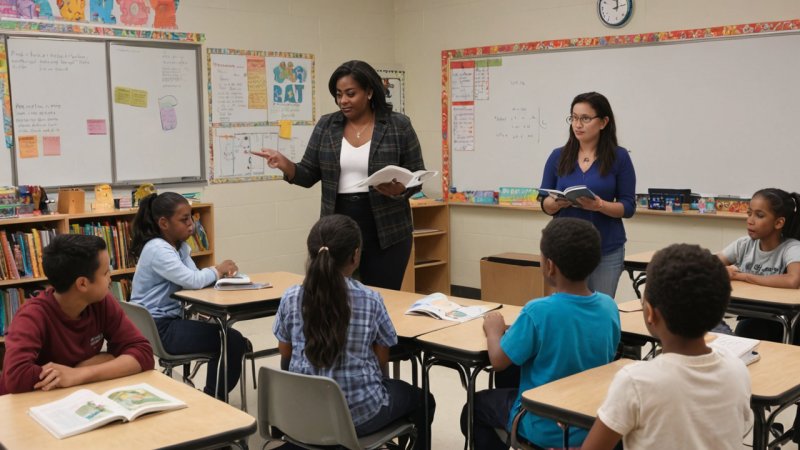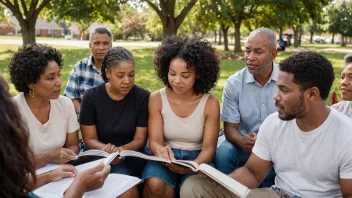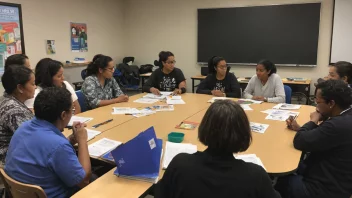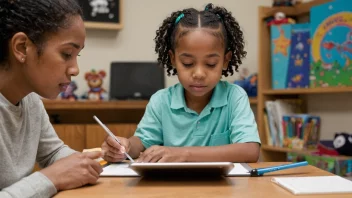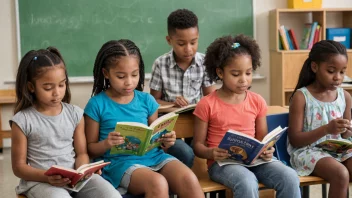Reading comprehension is a fundamental skill that opens the door to knowledge, creativity, and critical thinking. In today's fast-paced world, where information is abundant and easily accessible, the ability to understand and interpret written content has never been more crucial. However, many students struggle with reading comprehension, which can hinder their academic performance and lifelong learning. Educators, parents, and community members play a vital role in fostering effective reading strategies that equip learners with the tools they need to succeed. This article delves into the best practices for teaching reading comprehension skills, highlighting innovative approaches and practical tips to enhance understanding and engagement.
Understanding Reading Comprehension
Reading comprehension is the ability to process text, understand its meaning, and integrate it with what one already knows. It involves several cognitive processes, including decoding, fluency, and vocabulary knowledge. Effective reading comprehension goes beyond simply reading the words on a page; it requires critical thinking and the ability to relate content to personal experiences and broader contexts. To help students develop these skills, educators can utilize various strategies that cater to different learning styles.
Creating a Supportive Learning Environment
A supportive learning environment is essential for fostering reading comprehension skills. This includes not only a physical space conducive to learning but also an emotional atmosphere where students feel safe to express their thoughts and questions. Teachers can create this environment by:
- Encouraging open dialogue: Allow students to share their interpretations and opinions about texts. This promotes critical thinking and helps them learn from one another.
- Offering diverse reading materials: Provide a variety of genres and formats, including fiction, nonfiction, poetry, and graphic novels, to engage different interests and reading levels.
- Integrating technology: Utilize digital tools and resources, such as e-books and interactive reading platforms, to enhance engagement and accessibility.
Incorporating Active Reading Strategies
Active reading strategies encourage students to interact with the text rather than passively absorb information. These techniques can significantly improve comprehension by promoting critical thinking and retention. Some effective active reading strategies include:
- Annotation: Teach students to highlight key points, underline important phrases, and write notes in the margins. This encourages them to engage with the material actively.
- Questioning: Encourage students to ask questions before, during, and after reading. This can help them focus on specific aspects of the text and clarify any misunderstandings.
- Summarization: After reading, have students summarize the main ideas in their own words. This reinforces understanding and helps them retain information.
Utilizing Graphic Organizers
Graphic organizers are visual tools that help students organize information and ideas. They can be particularly beneficial for visual learners and can simplify complex texts. Some popular graphic organizers include:
- Venn diagrams: Useful for comparing and contrasting characters, themes, or events.
- Story maps: Help students outline the elements of a story, such as setting, characters, plot, conflict, and resolution.
- Cause and effect charts: Assist in understanding relationships between events or concepts within the text.
Encouraging Collaborative Learning
Collaboration fosters a sense of community and enables students to learn from one another. Group activities can enhance reading comprehension through shared insights and diverse perspectives. Teachers can implement collaborative learning by:
- Peer discussions: Organize small group discussions where students can share their thoughts and analyses of the text.
- Group projects: Assign projects that require students to work together to explore a topic or theme related to their reading.
- Reading buddies: Pair students to read together and help each other with comprehension.
Connecting Reading to Real Life
Connecting reading materials to real-life experiences can significantly enhance comprehension and relevance. Students are more likely to engage with texts that resonate with their lives. To establish these connections, educators can:
- Incorporate current events: Use news articles or reports that relate to students' lives or communities to spark discussions and interest.
- Encourage personal reflections: Ask students to relate themes or characters from their readings to their own experiences or feelings.
- Invite guest speakers: Bring in individuals from various fields to discuss how reading and comprehension impact their work and lives.
Assessing and Adapting Instruction
Ongoing assessment is crucial for understanding student progress and adapting instruction to meet individual needs. Teachers can use various methods to assess reading comprehension, including:
- Formative assessments: Conduct informal assessments, such as quizzes or discussions, to gauge understanding throughout the learning process.
- Summative assessments: Use tests or projects at the end of a unit to evaluate overall comprehension and retention.
- Feedback: Provide constructive feedback to help students recognize their strengths and areas for improvement.
Conclusion
Teaching reading comprehension skills is a multifaceted endeavor that requires creativity, patience, and a deep understanding of student needs. By creating a supportive environment, incorporating active reading strategies, utilizing graphic organizers, encouraging collaboration, connecting reading to real life, and assessing progress, educators can empower students to become proficient readers and critical thinkers. The journey to effective reading comprehension is not only about understanding words on a page; it is about unlocking the potential for lifelong learning and engagement in a rapidly changing world. Together, we can inspire the next generation of readers to explore, question, and connect with the world around them.
